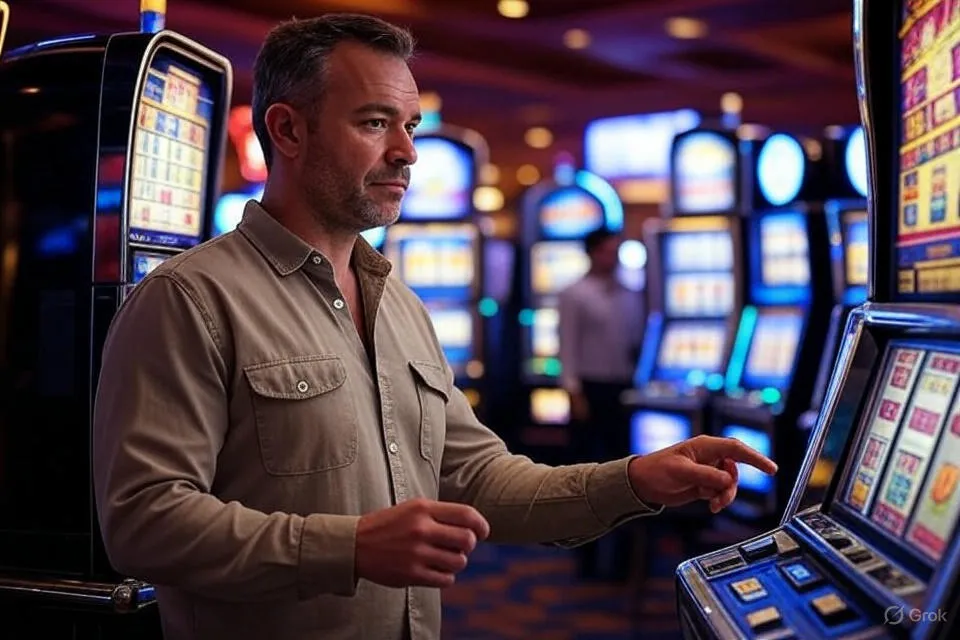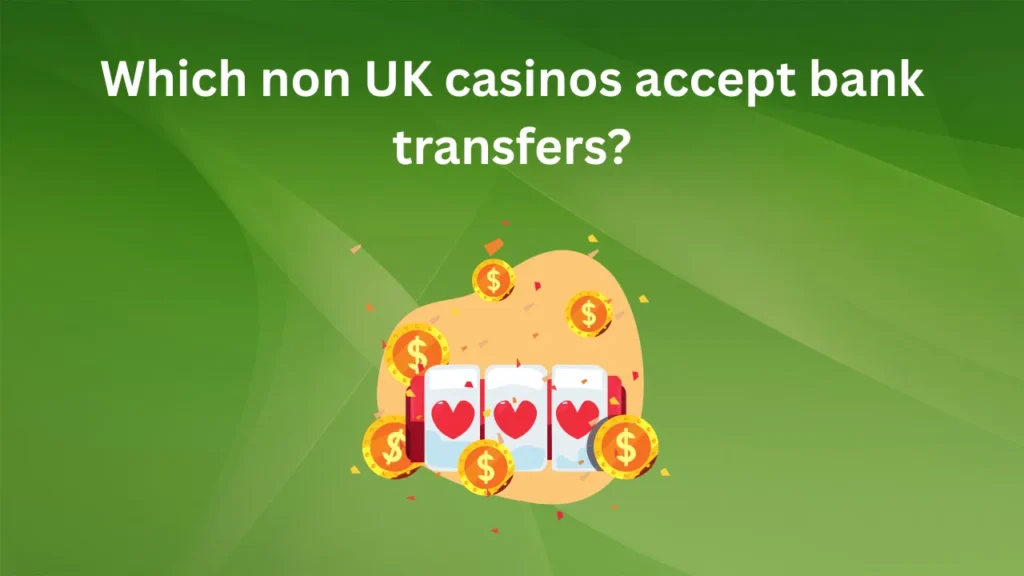One of the most common questions I hear from casual players and seasoned gamblers alike is: “How long should I stay on a slot before moving to another machine?” In my years roaming casino floors—from Las Vegas to Macau, and even exploring titles at non uk casinos —I’ve seen every strategy under the sun. Some folks switch machines after a single spin; others ride the same game for hours, convinced a hot streak is around the corner. In reality, there’s no one-size-fits-all answer. Instead, it depends on your goals, bankroll, game volatility, and how you interpret the game’s performance in your session. Below, I’ll unpack the factors that should guide your decision, share real-world insights, and help you find a balanced approach.
Why the “One-Spin Switch” Myth Persists
We’ve all seen the gambler who hops from machine to machine, barely giving each slot more than a moment’s attention. The belief is that if a machine doesn’t pay quickly, it’s “cold,” so you move on. This myth stems from a misunderstanding of how random number generators (RNGs) work. Each spin on a modern slot is independent; the probability of hitting a winning combination does not improve or worsen based on the last outcome.
Years ago, at a dingy casino off the Las Vegas Strip, I shared a drink with a retiree named Frank, who insisted he could “read machines.” Frank would drop $20 into a slot, spin once, and if nothing hit, he’d move on with a dramatic flourish. He claimed that sticking around meant the slot pulled your money faster. After pacing him through an explanation of RNGs and variance, he shrugged and said, “Maybe so, but I feel luckier that way.” That’s the power of belief: even though statistically each spin is independent, a gambler’s perception often overrides logic.
Rather than blaming the machine, the better approach is understanding volatility and variance. If you’re playing a high-volatility slot, it’s perfectly normal to experience many losing spins before a win. Bouncing after one or two spins can lock you out of meaningful chances. On the other hand, if you’re on a low-volatility title and already hit a jackpot, switching might make sense to chase fresh excitement.
Key Factors to Consider Before Switching Machines
When deciding whether to stay or switch, ask yourself: What’s my objective? Is my goal to minimize losses and extend playtime, or am I chasing a big jackpot? Do I want the social buzz of moving around, or the comfort of getting familiar with a machine’s patterns? Below are some practical considerations:
Assess Your Bankroll Relative to Bet Size
Your bankroll dictates how many spins you can afford. If you have a $200 bankroll and are betting $5 per spin on a medium-volatility slot, you should expect to survive at least 40 spins before hitting anything near an average return. In that case, ditching a machine after two spins is counterproductive. Conversely, if you only have $50 and are playing $5-per-spin high-volatility games, switching after a small run might be wise—you simply don’t have the cushion to ride out extended cold runs.
Monitor Hit Frequency and Payout Size
During your session, keep an eye on how often you land small wins. If you’re at a low-volatility penny slot and have seen small payouts every 15–20 spins—aligned with its typical RTP—there’s no need to abandon ship. But if you’re on a more volatile dollar machine and haven’t hit anything in 50–60 spins, you might consider moving on or reducing your bet size to stretch your funds.
Observe the Casino Floor Dynamics
Casinos strategically place high-traffic, popular machines near entrances and tables to attract players. Sometimes, a machine lingers unplayed not because it’s “cold,” but because it’s in an obscure corner or surrounded by less appealing titles. I remember a row of visually vibrant video slots in a Macau resort that sat empty simply because they were in a quiet hallway. When I tried one, it paid out more generously than machines next to me. Thus, don’t assume a deserted slot is off-limits—sometimes it’s an opportunity.
Consider Promotional Incentives or Tournaments
Casinos, including non uk casinos, often run slot tournaments or reward programs that temporarily boost a machine’s “value.” For example, a casino may offer double loyalty points for playing specific slots during a promotional window. Even if you’re deep into a cold streak, the added points can justify staying longer. I once chased a bonus on a branded slot in Atlantic City simply because the loyalty multiplier was set at 5x for that evening. I stayed on that same machine for twenty extra spins beyond my usual comfort zone, and although I didn’t hit a major jackpot, the points translated into free play credits later.
Signs It’s Time to Move On
While stubbornly clinging to a machine rarely pays in the long run, there are times when switching is a more rational choice than continuing. Here are some clear indicators:
Extended Cold Runs Beyond Expected Variance
Every slot has an average hit frequency. If your medium-volatility slot typically delivers a small payout every 25 spins but you’ve spun 75 times in a row with nothing, you’ve likely encountered an outlier cold run. While continuing could still yield a win, consider splitting your remaining bankroll to try a fresh machine. That way, you hedge your bets—if one machine suddenly pays, you’ll be on board; if not, at least you tried something new.
Diminishing Enjoyment or Focus
For many of us, the casino experience is as much about fun as it is about winning. If frustration mounts—your heart races, hands sweat, and you find yourself angrily mashing the spin button—that’s a strong cue to step away. I’ve seen seasoned players continue in such a state, only to blow through their session’s funds in the next 20 spins. Taking a break or switching to a calmer machine can preserve both your bankroll and your sanity.
Significant Changes in Casino Traffic Patterns
Sometimes, a machine’s performance can be influenced by how crowded the area is. If a machine goes cold the moment a crowd gathers—making it harder to concentrate—or lidar sensors detect excessive foot traffic nearby, you might not be enjoying optimal playing conditions. I recall a situation in a major tourist hub where a recently installed high-definition slot had a consistent payout pattern until the weekend crowds arrived. Once clusters of people formed around it, the machine seemed to stall. Moving to a less busy section of the casino helped me regain that pace.
How Often to Sample New Machines in a Session
There’s no bulletproof formula, but experienced players I’ve met often recommend a balanced approach. Here’s a strategy that’s worked for me:
Set a Trial Period of 30–40 Spins
In a medium-volatility slot, 30–40 spins usually give a clear picture of a machine’s behavior relative to its typical RTP. If within that range you’ve seen at least one or two modest wins—consistent with the game’s paytable—consider staying. If not, walk away. This guideline respects variance while protecting your bankroll.
Re-evaluate at Key Profit or Loss Milestones
Decide beforehand that if you’re up 50% of your starting bankroll, you’ll lock in profits and move to a new machine. Similarly, if you reach a 50% loss threshold, you switch or quit. By anchoring your decision to objective milestones, you’ re less prone to emotional judgments. For example, if I start with $100 and hit $150, I’ll bank $50 and try a fresh machine with $50, preserving my win. If I drop to $50, I might switch to a lower-volatility title to keep playing longer.
Incorporate Time-Based Breaks
Spinning continuously can lead to diminishing returns simply because you lose focus. After every 20–30 minutes, I stand up, stretch, and grab a drink. During that break, I assess whether I want to continue on the same machine or try something else. Often, a simple change of scenery resets my mindset and helps me make more rational choices.
The Role of Volatility in Your Decision
Volatility determines how frequently and how big a slot’s payouts typically are. Understanding your chosen machine’s volatility is crucial to knowing when to switch.
Low-Volatility Slots
These machines pay small wins frequently. You might be better off staying longer because you’re likely to recoup small losses progressively. If I’m on a low-volatility penny slot, I’ll ride it longer, since extended cold runs are rare. Only after, say, 60–80 spins without a single small win will I reconsider.
High-Volatility Slots
Here, wins are infrequent but can be massive. If your bankroll is limited—to $50 or $100—sticking around for 100 spins without a single hit can be disastrous. In that scenario, I often dedicate only 20–30 spins per machine before moving on. That way, I try multiple machines, hoping to catch the next big-leg opportunity.
Medium-Volatility Slots
These lie in between. My rule of thumb: sample 30–40 spins, then decide based on results and comfort level. If I see a hit that at least equals my bet size within that window, I stay. If not, I move on.
Strategies for Trying New Machines Wisely
When you decide to move, keep these tips in mind:
Avoid Chasing “Hot Seats”
Some players believe that jumping into a machine right after someone else wins increases their odds. That’s a misconception—each spin is independent. Instead of chasing other players’ luck, judge machines on their own performance during your session.
Rotate Between Denominations
If you play a $1 demo at first and notice rpm (revenue per minute) is slower than you’d like, try a cent or nickel machine. Similarly, if a penny slot seems too sluggish, consider stepping up to quarter or dollar denominations—provided you have the bankroll to sustain the larger bets. In Atlantic City, I once shifted from a slower penny slot to a quarter machine and found that the payout frequency was surprisingly similar, but my session felt more stimulating.
Leverage Casino Promotions
Lastly, if a casino runs a festival of points or a leaderboard contest on specific machines, that incentive can justify staying longer than usual. I once played at a riverboat casino where quarter slots offered double comps during weekends. Even though my bankroll started dwindling, I stuck around just enough extra spins to earn a free buffet coupon—worth more than the small additional losses.
Common Misconceptions and Pitfalls
Several fallacies can undermine your decision-making:
Belief That Machines “Warm Up” After Being Unplayed
Some think that if a machine sits idle for a while, it becomes likelier to pay. In truth, the RNG remains active even when the machine is untouched; timing or idleness doesn’t alter odds. I once watched a friend wait 15 minutes after a machine went dark before trying it, convinced it would “reset.” Of course, the first spin he made was a flush of cherries, but purely by chance.
Assuming Manufacturers Tune Machines Daily
Slot settings—RTP and volatility—are configured by the casino’s engineering staff under regulatory oversight. They aren’t changed daily or between players. So whether you play a game today or six months from now, the long-term house edge is the same, though your short-term experience will fluctuate.
Overemphasizing Big Wins as Indicators
Going up 500 credits in a single spin may feel like a sign of hotness. But if that hit was a rare jackpot, the machine will still pay as programmed afterward, not suddenly “cool off” because it just paid big. Treat every spin as independent. The day I won a 2,000-credit jackpot on a Macau video slot, I watched as the next spins yielded nothing. It reminded me that big wins don’t reset probability.
Final Thoughts
Ultimately, deciding how often to change slot machines comes down to your personal style and objectives. If your goal is entertainment and you have a sufficient bankroll, you might engineer several short sessions on multiple machines. If you aim for longevity, choose a machine whose volatility suits your budget and give it a fair trial—often 30–40 spins on a medium-volatility slot. Trusting myths or reacting emotionally rarely pays; instead, rely on a blend of practical guidelines and introspection about your gaming preferences.
Whether you’re playing on a glittering casino floor in Vegas or exploring virtual titles at non uk casinos, remember that every spin is independent. By managing your bankroll, monitoring the game’s behavior, and taking timely breaks, you’ll turn what many see as a random endeavor into a more controlled, enjoyable experience. Above all, treat slots as a form of entertainment—any money you spend is the price of that entertainment. If you leave a session faster than planned, take pride in having disciplined your play.




